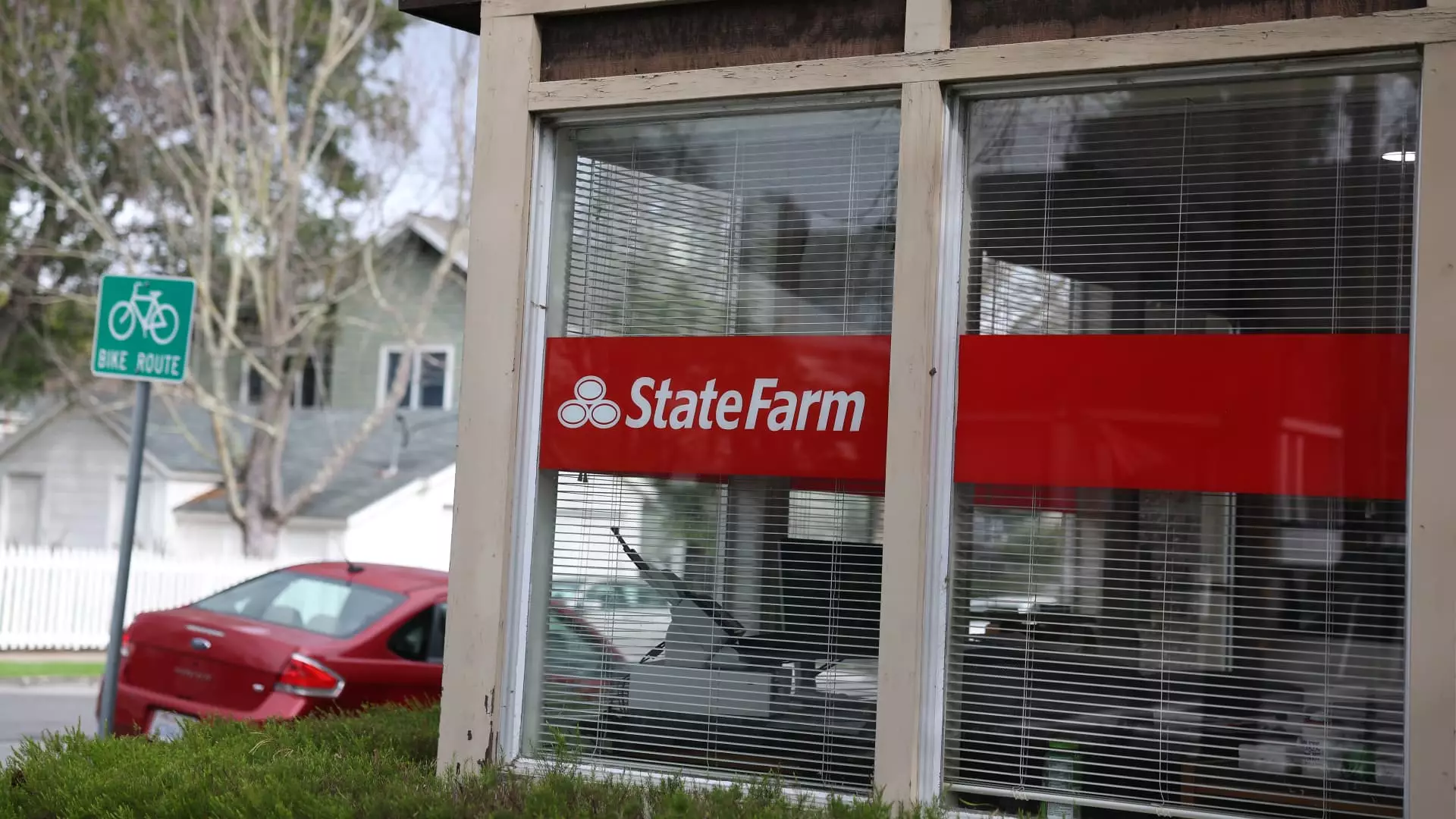State Farm is currently navigating turbulent waters as it battles for approval of a significant rate increase for homeowners in California, aimed at averting a financial doomsday. This week, in an administrative hearing held in Oakland, the insurer seeks permission to raise rates, which it claims is necessary to bolster its capital in the fallout of the devastating Los Angeles wildfires. With debts piling up from nearly 3 million homeowners’ policies, State Farm is positioned precariously on the edge of a financial abyss, and the stakes could not be higher. If the increase is denied, the company risks further financial destabilization that may ripple through the insurance market.
The situation is dire enough that California’s Department of Insurance has drawn an alarming analogy: an attorney described the predicament as akin to the Titanic with an iceberg on the horizon — it’s not too late to veer off course, but time is running out. Given that State Farm controls roughly 20% of the state’s homeowners market, its financial instability poses a threat to millions of insured Californians, leaving them metaphorically ‘in the water’ with few means of rescue should the situation worsen.
The Record Costs of Natural Disasters
The backdrop to State Farm’s predicament is the staggering financial toll taken by recent natural disasters, primarily the Los Angeles wildfires, which have caused an estimated $250 to $275 billion in damages—making this the costliest natural disaster in recorded history. Insurers in California, including State Farm, have faced heightened pressure due to not only the increasing frequency of disastrous events but also the escalating costs associated with large-scale claims. The sobering reality is that while the insurance industry is expected to cushion the impact of such events, many carriers are drowning under the weight of payouts that far exceed their premium collections.
In its pursuit of an emergency rate hike, State Farm initially sought a 22% increase but has since haggled that down to a still staggering 17%. For rental dwelling policies, it’s looking at a 38% hike, which sounds alarm bells. While the company asserts that these increases are necessary for survival, the reality translates into more financial strain for thousands of California homeowners and renters who are already dealing with economic constraints. It is a troubling precedent when insurance companies feel that survival means passing their financial burdens onto policyholders.
Political Implications and Regulatory Challenges
From a political standpoint, the California Insurance Commissioner Ricardo Lara faces a difficult balancing act. He is under pressure from both insurance companies, making pleas for more competitive rates, and consumer advocacy groups that allege the proposed hikes are unjustified and will harm the average Californian. Lara’s historically cautious stance against significant rate hikes adds another layer of complexity. The commissioner’s role has been scrutinized, as he must reconcile the needs of industry sustainability with the advocacy for consumer protection.
Consumer watchdog groups decry State Farm’s shifting demands. William Pletcher, an attorney for Consumer Watchdog, has avantgarde concerns about the inconsistencies in State Farm’s requests. Initially asking for a 22% increase and now a 17% rate climb raises eyebrows. This uncertainty not only sows distrust among consumers but also highlights the flawed foundations upon which this proposal rests.
The Shifting Landscape of Insurance in California
In the larger context, the turmoil faced by State Farm reflects a broader crisis in California’s insurance market. This chaos symbolizes the detrimental cycle whereby insurers increasingly hesitate to underwrite policies in fire-prone and disaster-dense areas, citing heightened risks. The insurer of last resort, the FAIR Plan, has ballooned in size as homeowners seek alternatives after being dropped by traditional insurers. This influx is unsustainable, and its growth amplifies concerns around the viability of insurance protection in our state.
The newly introduced “Sustainable Insurance Strategy” acknowledges these pressing issues and aims to rectify the tumult by implementing catastrophe modeling into rate-setting processes. It remains to be seen whether these reforms will yield long-term improvements. Janet Ruiz of the Insurance Information Institute stresses that this initiative is essential for correcting systemic issues, but skepticism looms large. Can consumers trust these strategic measures when the companies’ actions speak otherwise?
The Future of Home Insurance in California
Overall, the narrative unfolding around State Farm’s rate increase request is more than just a discussion about numbers; it is a pivotal moment that encapsulates the state of California’s insurance market and the implications for its people. With the specter of further financial instability hanging over millions of residents, the focus should shift toward creating a sustainable model that balances the needs of insurers while prioritizing the protection and affordability of coverage for Californians. The questions remain: Can California’s insurance landscape be salvaged? And at what cost to those who merely seek to protect their homes?

